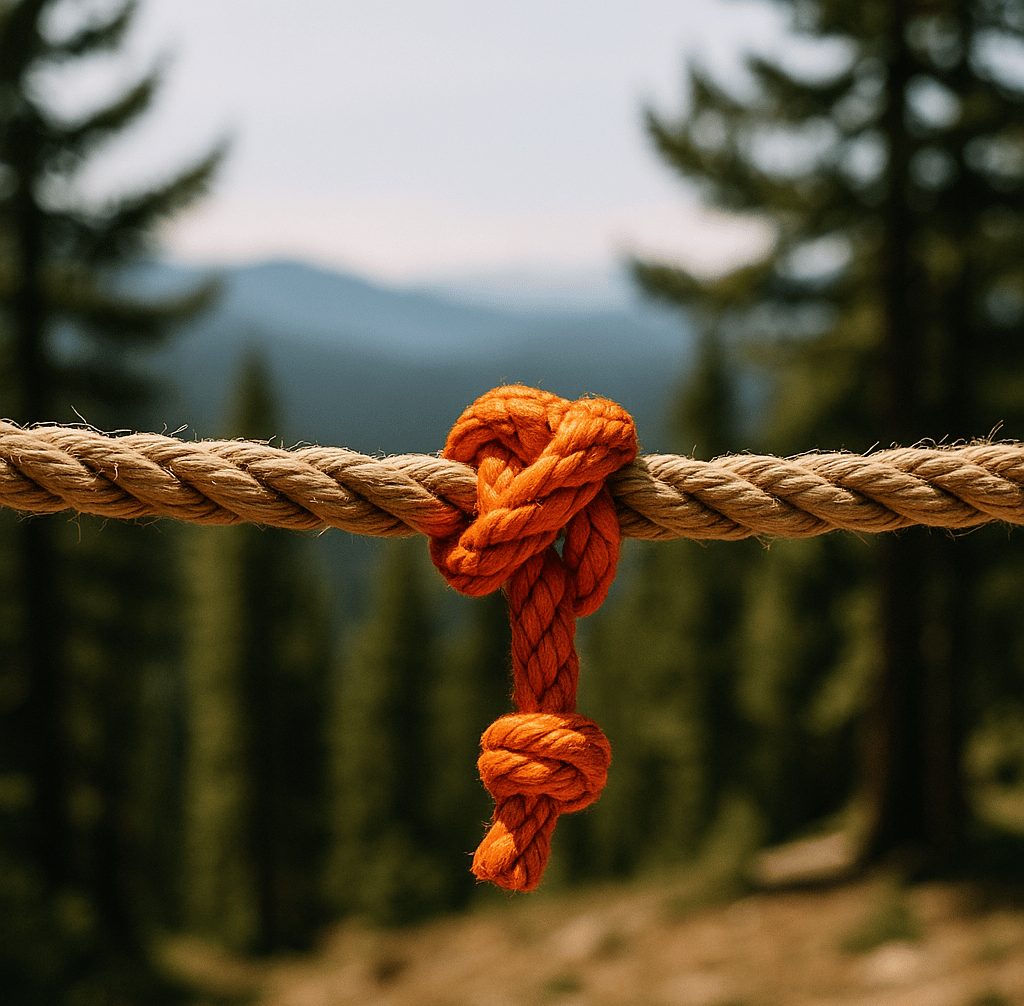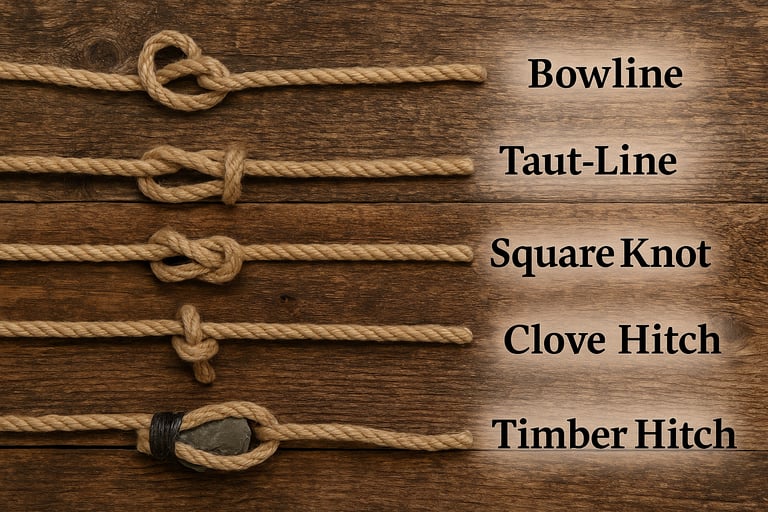Top Survival Knots Everyone Should Know
Learn how to tie the most important survival knots for wilderness emergencies, shelter building, and gear repair. This guide breaks down easy-to-learn knots that could save your life in the wild.


Top Survival Knots Everyone Should Know
Why Knowing Survival Knots Matters
When you're in the wild, a simple piece of cordage becomes a lifeline, but only if you know how to use it properly. From securing shelters and gear to building traps or climbing safely, survival knots are essential wilderness skills. The right knot can mean the difference between a stable setup and a disaster. Fortunately, you don’t need to memorize dozens — just a handful of versatile, easy-to-learn knots can handle nearly every task you'll face in the backcountry.
The Bowline: Your Go-To Loop Knot
If you only learn one knot, make it the bowline. This creates a fixed loop that won’t slip, making it perfect for shelter corners, rescuing someone from a hole, or hanging gear. It holds firm under pressure but can be untied even after being loaded (This knot is especially useful when setting up shelters like a lean-to or A-frame, where strong loops are needed at corners or anchor points). Think of it as the wilderness equivalent of a carabiner — reliable, quick, and strong.
The Taut-Line Hitch: Adjustable and Secure
Need to keep a tarp tight or adjust a guy line without retying the whole thing? That’s where the taut-line hitch shines. It creates an adjustable loop that grips the standing line, letting you slide it to tighten or loosen tension. It’s especially useful when weather or ground conditions shift, and your shelter needs tweaking.
The Square Knot: Best for Joining Two Lines
While not the strongest under load, the square knot is great for joining two equal-diameter ropes, like extending a guyline or bundling firewood. It's quick, simple, and easy to remember: right over left, left over right. Just don’t use it for critical loads where slippage could be dangerous.
The Clove Hitch: Fast and Reliable for Anchoring
The clove hitch is ideal when you need to fasten a rope to a tree, stake, or post. It’s quick to tie and untie and works best when there's consistent tension. You can use it to start a ridge line, hang a pot, or secure gear.
The Timber Hitch: Great for Hauling Logs or Poles
If you're dragging firewood, setting up a log shelter, or hauling a heavy stick, the timber hitch wraps around the end and tightens as you pull. It’s easy to tie and just as easy to undo, even after being loaded.
You can also use this knot when assembling structures like a bough bed shelter or cordwood wall.
Practice Before You Need Them
All these survival knots can be learned in under a day, but they need occasional practice to stay sharp. Keep a piece of cordage nearby when relaxing, and practice tying these knots until they become second nature. In a survival situation, muscle memory is one of your best friends.
Final Thoughts on Knot Mastery in the Wild
Knowing a few good knots isn't just about survival, it's about confidence and capability. These knots are timeless, proven, and relied on by outdoorsmen and survivalists for generations. When you're in the field, being able to tie the right knot quickly can save time, energy, and even lives. So grab some cordage and start practicing — you’ll be surprised how useful these simple skills become.
And click here to learn how to make your own natural cordage in the wild.


© 2025. All rights reserved About | Privacy Policy | Terms and Conditions | Affiliate Disclosure | Disclaimer


